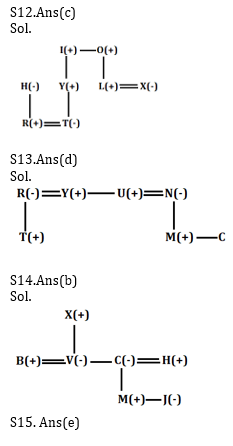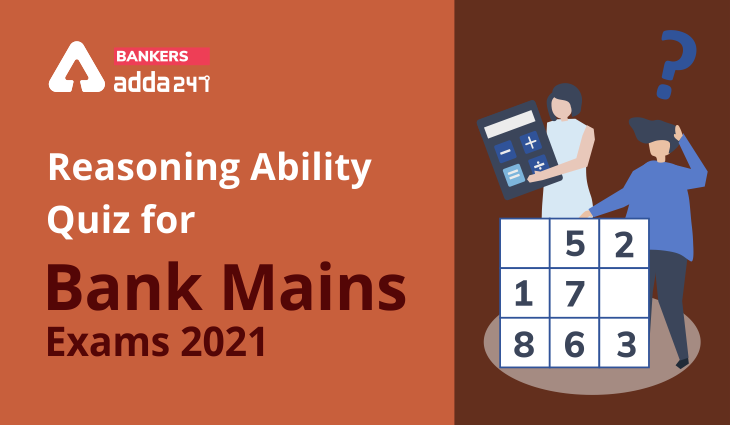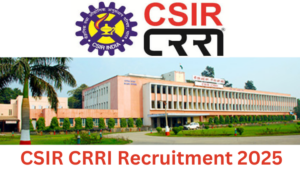Directions (1-5): Study the information carefully and answer the questions given below.
Six persons sit around a triangular table in such a way that three persons sit at three corners of table and face towards the center and rest sits each at middle of the side of triangle and face outside the center. All of them live on six different floors of the building in such a way that ground floor is no. as 1 and top floor is no. as 6 and each of them belongs to six different places i.e. Gurgaon, Noida, Delhi, Jaipur, Agra and Rewari but not necessary in same order.
N faces inside and lives on an even number floor. One person sits between N and the one who belongs to Gurgaon. J belongs to Rewari. The one who belongs to Noida live just below the one who belongs to Delhi. K is immediate neighbor of the one who belongs to Gurgaon. More than three persons live between L and the one who belongs to Delhi. M lives on the 4th floor. The one who lives on first floor sits second to the left of K. The one who lives just below the one who belongs to Noida sits immediate left of K. The one who belongs to Agra lives just below and sits third to the right of the one who belongs to Jaipur. O face outside and not immediate neighbor of M. K does not belong to Delhi. L does not belong to Gurgaon.
Q1. Who among the following sits second to the right of M?
(a) J
(b) N
(c) K
(d) L
(e) O
Q2. Who among the following belongs to Delhi?
(a) K
(b) M
(c) The one who belongs to 2nd floor
(d) The one who sits second to the right of K
(e) None of these
Q3. Who among the following person belongs to Agra?
(a) J
(b) M
(c) L
(d) N
(e) K
Q4. How many persons live between K and the one who sits second to the left of J?
(a) Two
(b) One
(c) Four
(d) Three
(e) No one
Q5. Which of the following combination is true?
(a) O-Noida
(b) M-Gurgaon
(c) L-Jaipur
(d) K- Rewari
(e) None is true
Directions (6-8): Each of the questions below consists of a question and two statements numbered I and II given below it. You have to decide whether the data provided in the statements are sufficient to answer the question.
(a) If statements I alone is sufficient to answer the question, but statement II alone is not sufficient to answer the question.
(b) If statement II alone is sufficient to answer the question, but statement I alone is not sufficient to answer the question.
(c) If statement either I or II is sufficient to answer the question.
(d) If both the statements I and II taken together are not sufficient to answer the questions.
(e) If both the statements I and II taken together are sufficient to answer the questions.
Q6. Six persons D, U, K, L, M and N are sitting in linear row and facing north. Who among sits second to the left of K?
I. Two persons sits between L and M. One person sits between K and L. D is not immediate neighbor of L.
II. D sits third to the left of K. U is immediate neighbor of D. K does not sit extreme end of the row.
Q7. How many children are there between P and G in a row of children?
I. P is tenth from the right end in the row of 40 children.
II. G sits twelfth from left end of the row.
Q8. How is F related to A?
I. A is son in law of D. B is daughter of F.
II. H is brother in law of B.
Directions (9-10): Each of the questions below, consist a question and three statements numbered I, II and III. You have to decide whether the data provided in the statements are sufficient to answer the question. Read the three statements and Give answer
(a) If the data in statement I and II together are sufficient to answer the question, while the data in statement III are not required to answer the question.
(b) If the data in statement I and III together are sufficient to answer the question, while the data in statement II are not required to answer the question.
(c) If the data in statement II and III are sufficient to answer the question, while the data in statement I are not required to answer the question.
(d) If the data in all three statements I, II and III together are necessary to answer the question.
(e) If the data in all the statements, I, II and III even together are not sufficient to answer the question.
Q9. Who among J, K, L, M, N, O and P is heaviest?
I. J is third lightest person. N is heaviest than M and K.
II. K is lighter than M and O. O is not the heaviest.
III. P is third heaviest person. L is heavier than P. Neither L nor N is heaviest.
Q10. Eight persons are sitting in a circular table. Some of them face towards center and some of them away from the center then who among the following sits second to the right of L?
I. N face T, who sits second to the right of S. P sits third left of R.
II. S sits third to the right of M. Two persons sit between S and R. Immediate neighbor of S face opposite direction to each other. S and L face opposite direction to each other.
III. L sits third to the right of P and immediate left of M. The one who is immediate right of M sits second to the right of S, who face towards center. N is immediate neighbor of P who faces towards the center.
Directions (11-14): Each of these questions is based on the following information:
(i) A @ B means A is the mother of B.
(ii) A * B means A is the daughter of B.
(iii) A $ B means A is the brother of B.
(iv) A # B means A is the son of B.
(v) A % B means A is the father of B
(vi) A & B means A is the husband of B
Q11. Who among the following is ‘grandmother of T’ in this relation- ‘T*W#Y&U@O$L%M’?
(a) Y
(b) L
(c) M
(d) U
(e) Can’t be determine
Q12. If the expression ‘H@R&T*Y#I$O%L&X’ true, then which of the following is true?
(a) O is father of Y
(b) R is son in law of H
(c) X is daughter in law of O
(d) L is uncle of I
(e) None is true
Q13. If the expression ‘R@T#Y$U&N@M$C’ true, then which of the following is false?
(a) U is father of C
(b) Y is brother in law of N
(c) R is sister in law of U
(d) T is brother in law of C
(e) All are true
Q14. Which of the following shows the relation that ‘H is brother in law of V’?
(a) V*X@M$J#H%C&B
(b) B&V*X%C@M$J#H
(c) C@M$J#B#V*X%H
(d) X%C@M$J#H#B&V
(e) None of these
Q15. A lady says to a man, “Your Son’s only brother in law is only son in law of my brother only sister.” How is the lady’s daughter related to the man’s daughter in law?
(a) Sister
(b) Mother
(c) Mother in law
(d) Granddaughter
(e) Sister in law
Solutions



Practice with Online Test Series for Bank Mains 2021:
Click Here to Register for Bank Exams 2020 Preparation Material




 GA Capsule for SBI Clerk Mains 2025, Dow...
GA Capsule for SBI Clerk Mains 2025, Dow...
 The Hindu Review October 2022: Download ...
The Hindu Review October 2022: Download ...
 Delhi CSIR CRRI Recruitment 2025 Notific...
Delhi CSIR CRRI Recruitment 2025 Notific...







